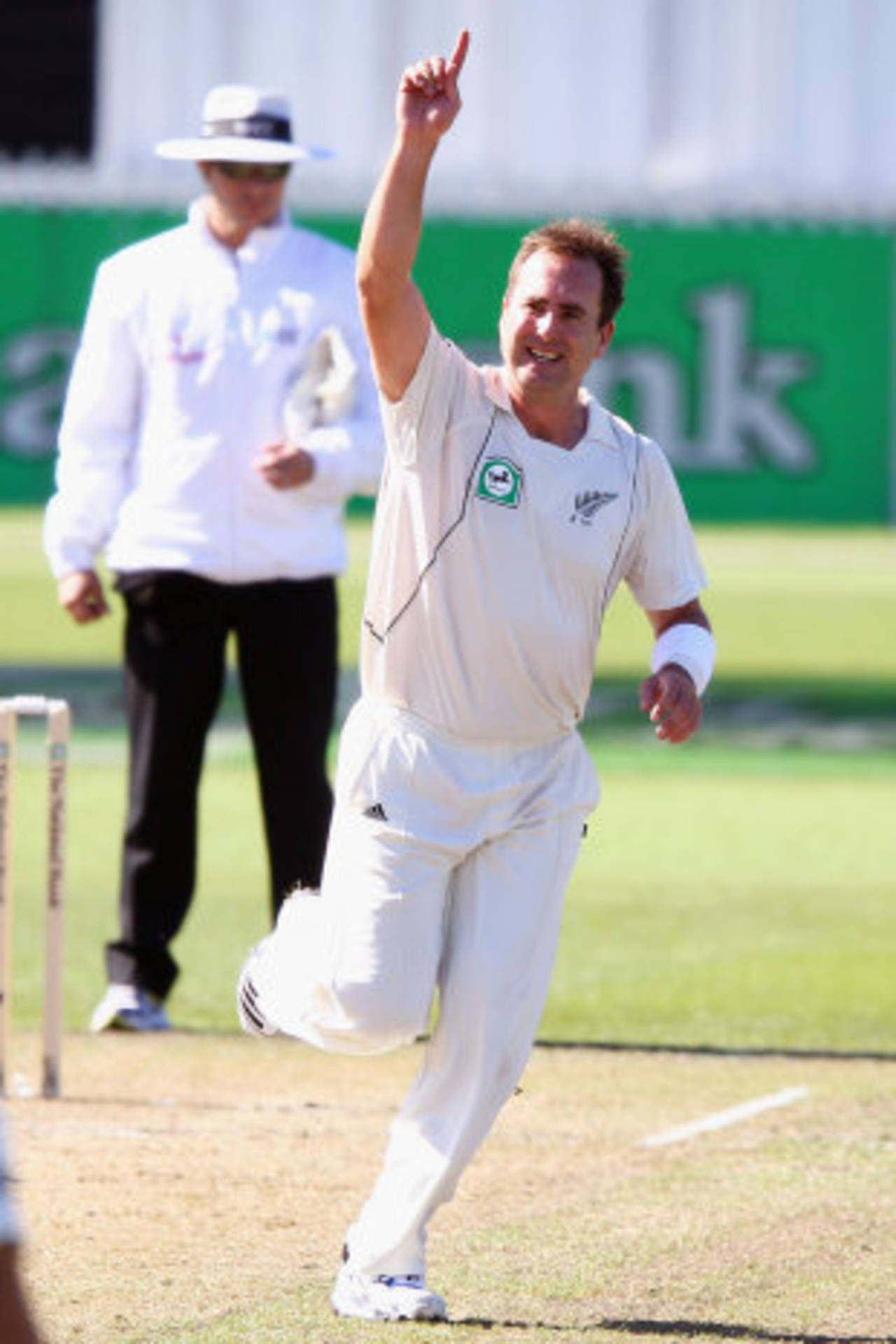New Zealand attack allows South Africa off the mat
New Zealand had South Africa reeling at 88 for 6 but their bowlers were unable to deliver the fatal blow, allowing South Africa to steal a first-innings lead
Firdose Moonda in Hamilton
16-Mar-2012

Mark Gillespie provided New Zealand's attack with a spark but the home side were unable to maintain the pressure when they had South Africa on the mat • Getty Images
New Zealand's bowlers do not deserve the blame for their team's current position. To stub out a South African line-up that boasts of Jacques Kallis, Hashim Amla and AB de Villiers, plus a lower-order that has the ability to stick around, for just over 250 is an effort most attacks would be proud of.
But having reduced South Africa to 88 for 6, they would have had hopes of doing much better. Instead, they conceded at least 68 runs too many, underlining the difference between a merciless attack, like South Africa showed in the first innings, and one that can sometimes veer on the side of pedestrian.
Chris Martin made use of some early inswing while Doug Bracewell immediately found a good length, but they did not create any real wicket-taking opportunities. What they did create was pressure, giving away only 35 runs in 22 overs, but they lacked the cutting edge South Africa displayed on day one.
Fortunately for New Zealand, Mark Gillespie found that extra gear on his return to Test cricket. His four wickets in four overs was not quite as spectacular as South Africa's five wickets for no run on the first day, but it did almost the same job. He bowled at good pace, reaching the 140s consistently and was able to extract movement away from the right-hander. His bad balls - and there were some - were more than counterbalanced by wicket-taking ones. The short ball that Kallis top-edged for six didn't matter when Gillespie had him caught two balls later, neither did the full one on the pads to Alviro Petersen that was flicked for four, because he was out lbw four balls later.
It was at this stage that New Zealand should have been looking for ways to apply more pressure. Having taken four wickets in four successive overs, Gillespie could have had a third slip in place, which might have yielded a fifth. Only after AB de Villiers edged in the vacant third-man region was a man put there and no edges went his way. It was the sort of situation that called for the balance between attack and defence to be shifted, something John Wright his team is still learning about.
After Gillespie's burst, Ross Taylor seemed to have a fairly good plan. He used Daniel Vettori to plug up one end and alternated between Doug Bracewell and Chris Martin on the other. What failed then was that neither of his strike bowlers, struck. Bracewell's pendulum swung from too full to too short and Martin was accurate but not incisive. What may have had them on the back foot was AB de Villiers' positive approach. He came forward to Vettori and played his shots despite the situation to blunt New Zealand's intent.
New Zealand also allowed the tail to wag once Gillespie removed Mark Boucher. Their lack of consistency in hitting the right areas, particularly from Brent Arnel but occasionally from every other bowler as well, cost them. They seemed to have forgotten that the pitch was still good for batting and that de Villiers was a top order batsmen. When Bracewell strayed on the pads or banged one in too short, de Villiers knew that if he got it through the inner ring, on a quick outfield, he'd collect four.
Philander and Morkel stayed with him for long enough to give South Africa the lead. Occasionally it was lack of thoughtful enough field placings as Taylor insisted on bringing his men in when the tail ender man was facing and spreading them when de Villiers was on strike. Against a competent lower order, the result was unnecessary runs, mostly in the form of boundaries, as South Africa went at almost six runs to the over at one stage.
At other times, it was lack of thought from the bowlers, such as when Gillespie opted for the short ball instead of the yorker when he was brought back on to bowl at Morne Morkel. He did the same against Imran Tahir, perhaps letting ego get in the way of action towards the end. Philander and Steyn can sometimes be guilty of the same. The difference is that their egos have been built on results that New Zealand's attack still has a long way to go to match.
Firdose Moonda is ESPNcricinfo's South Africa correspondent